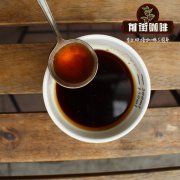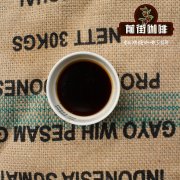What are the advantages and disadvantages of sun treatment of raw coffee beans? What's the flavor of sun-dried coffee beans? There are some sun treatments.

Professional coffee knowledge exchange more coffee bean information please follow the coffee workshop (Wechat official account cafe_style)
What are the advantages and disadvantages of sun treatment of raw coffee beans? What's the flavor of sun-dried coffee beans? What is the subdivision of sun treatment?
So the sun-dried beans are the most primitive and natural way to directly expose the coffee cherry (fruit) into dried fruit, and then remove the peel and pulp.
There are many intermediate variables, such as fruit maturity, defects, incomplete or slow drying, or rain (so the rainy areas of the harvest season are not suitable for sun exposure, which is easy to overferment or mildew); selection of finished products So good sun-dried beans are more expensive than water-washed beans, and cheap ones have to try their luck (in some areas, there is a shortage of water resources, so they can only inherit the ancient method of using the sun, and all conditions are well matched, and there are also good sun-dried beans, but because businessmen exploit them layer by layer, they encounter good quality beans. Even if you buy it cheap, he won't sell it cheap!
It is said that tanning is the oldest method of treatment, and it is also the simplest and most simple one that does not require utensils. The first step is to screen the floating beans in the water, so that the immature coffee beans float naturally due to the buoyancy of the water, while the ones that sink are the full coffee beans that have no problem.
At the same time, simply clean the surface dirt of coffee fruit, remove leaves and miscellaneous branches, so as not to cause mildew and miscellaneous smell when exposed to the sun.
Choose a flat open space with easy access to the sun, the second step is to smooth the coffee fruit, do not overlap and pile it too densely as much as possible, otherwise it is easy to breed bacteria and cause mildew, which needs to be stirred many times a day. It usually takes about two to three weeks to increase or decrease the exposure time according to the weather conditions, and the accurate detection standard is to remove the pulp and detect that the water content of coffee beans is less than 12%.
In the process of stirring, remember to pick out fallen leaves and insects to avoid defects such as worms and beans.
The coffee beans are usually dark red at this time. In the third step, the peel and pulp of the sun-dried fruit are removed and preserved with a shell. It takes about a month or so to make the taste thicker and precipitate. in modern times, most of them use machines instead of handworks. however, there are still some backward areas and small farmers use blunt objects to knock on the peel.
It is recommended to use a machine to remove it, which can reduce the damage to the integrity of the coffee bean itself. Chen Cang remembers to choose a dry place that does not come into contact with the sun.
Advantages:
In the process of sun treatment, the amount of water required is less, the cost is relatively low, and its flavor is rich in fruit aroma and sour taste.
Disadvantages:
Must be placed in contact with the sun, for the weather environment requirements are more stringent, generally concentrated in tropical dry and wet climate countries, weather, environment uncontrollable factors, improper treatment, prone to defective beans, worm-eaten beans, rotten, mildew problems, at this time more flavor impurities.
Tanning is the oldest and easiest way to handle coffee beans in the world.
Pour the fruit into the sink to sift, the ripe beans will sink to the bottom, and the floating beans will be removed.
Then put it in the outdoor sun until the water content is reduced to less than 12%.
Keep turning the coffee beans to prevent mildew during the period.
Finally, put in the machine to remove the peel, pulp and sheepskin and bag it.
(floating beans: mostly stunted or overcooked beans)
This method has the advantages of simplicity, water saving and low cost.
The disadvantage is that it is easy to mildew because the flesh is not removed during the sun exposure.
Or different degrees of dryness lead to excessive fermentation and sour smell.
Sun treatment has a rich flavor of tropical fruits, berries and wine, with a mellow taste and rich layers.
It is suitable for gluttons who like rich fruit flavor.
Solarization method
Tanning is the oldest and most convenient way to treat raw beans.
One sift out the floating beans.
Pour the harvested coffee fruit into a big trough, and the ripe and full fruit will sink to the bottom of the water
Underdeveloped or overripe fruits will surface and these floating beans need to be removed.
Two-day drying
Then there is the whole coffee fruit with meat and belt.
Put it on the bean drying farm and dry it naturally to about 12% of the sea water.
It takes about two to four weeks, depending on the climate of the place of origin.
three. Shelling
The dried fruit will be naturally dried.
Use a shelling machine to remove the hard peel, pulp and sheep skin.
The raw beans appeared.
The advantages of solarization
1. Simple, low processing cost.
two。 Raw beans are naturally dried in the pulp and absorb the essence of the fruit, so the aroma is rich, sweet and mellow.
Shortcomings of solarization method
1. In some producing areas, the sun treatment did not screen out the floating beans, resulting in defects in the quality.
two。 During the drying process, the pulp is easy to mildew due to the return of moisture, which pollutes the raw beans.
3. The shelling of the machine inevitably hurts the raw beans, resulting in appearance defects.
Half-sun method
An improved treatment method for improving the quality of sun-dried beans in the area of traditional solarization
one. Sift out floating beans (same sun method)
two. Remove the pulp (same as washing)
three. Sun drying
Remove the pulp and pectin seeds into the outdoor sun for several days
During this period, the seeds must be turned continuously so that the seeds can be dried evenly inside and outside.
The half-sun section in Brazil will be further dried by machine, reducing the water content to 10.5-12%.
Costa Rica's famous Miel treatment, which is also half-sun treatment.
The difference lies in the drying stage, where the whole process is dried in the sun.
four. Mature
Put the dried sheepskin raw beans in a special container and store them for dozens of days [ripe]
Finally, the shell is polished to get raw beans.
Important Notice :
前街咖啡 FrontStreet Coffee has moved to new addredd:
FrontStreet Coffee Address: 315,Donghua East Road,GuangZhou
Tel:020 38364473
- Prev

What are the categories of fermentation methods for raw coffee beans? How do different degrees of fermentation affect coffee
Professional coffee knowledge exchange more information about coffee beans Please follow the coffee workshop (Wechat official account cafe_style) what are the categories of fermentation methods for raw coffee beans? How does different fermentation degree affect the flavor of coffee beans? Sasa, the world barista champion, used an innovative fermentation process called washing carbon dioxide impregnation, and two years later he had his own estate.
- Next

How do you drink Kenyan coffee? What is the best coffee in Kenya? Kenyan coffee grades.
Professional coffee knowledge exchange more coffee bean information Please pay attention to coffee workshop (Wechat official account cafe_style) Coffee quality unfortunately there is no international standard, only by a few coffee characteristics unique to each country of origin. Take a sample of coffee beans from a bag, evaluate them according to the standards of that country, and then label the whole bag of coffee beans with a grade label.
Related
- Detailed explanation of Jadeite planting Land in Panamanian Jadeite Manor introduction to the grading system of Jadeite competitive bidding, Red bid, Green bid and Rose Summer
- Story of Coffee planting in Brenka region of Costa Rica Stonehenge Manor anaerobic heavy honey treatment of flavor mouth
- What's on the barrel of Blue Mountain Coffee beans?
- Can American coffee also pull flowers? How to use hot American style to pull out a good-looking pattern?
- Can you make a cold extract with coffee beans? What is the right proportion for cold-extracted coffee formula?
- Indonesian PWN Gold Mandrine Coffee Origin Features Flavor How to Chong? Mandolin coffee is American.
- A brief introduction to the flavor characteristics of Brazilian yellow bourbon coffee beans
- What is the effect of different water quality on the flavor of cold-extracted coffee? What kind of water is best for brewing coffee?
- Why do you think of Rose Summer whenever you mention Panamanian coffee?
- Introduction to the characteristics of authentic blue mountain coffee bean producing areas? What is the CIB Coffee Authority in Jamaica?

